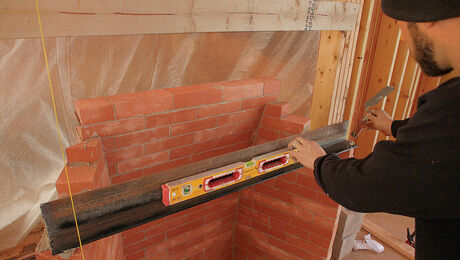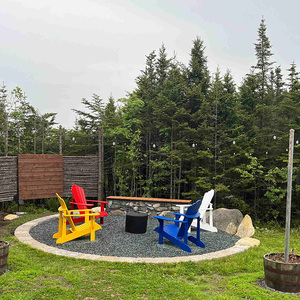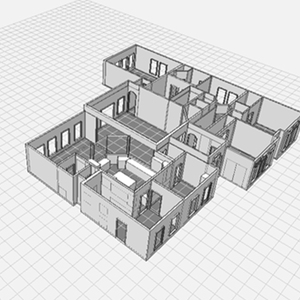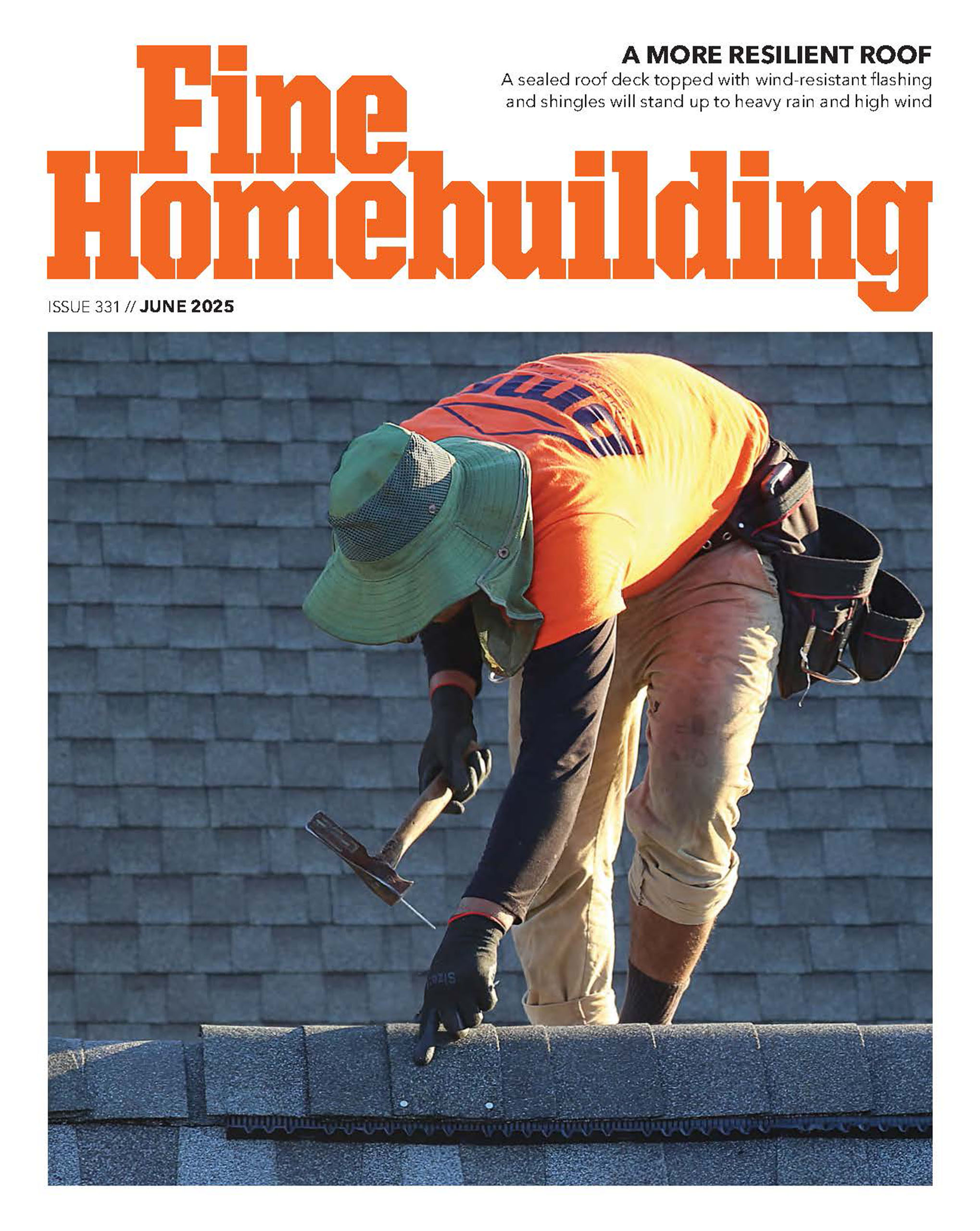Hey everyone, I’m new here and thinking of designing & building a house in a few years and acting as my own general contractor. A lot of books I’ve read recommend sticking to standard dimensions for cost reasons.
That makes sense-but what dimensions should I standardize? For example, when designing a 16X20 foot living room should it be measured from wall to wall, center to center etc, exterior of wall to exterior of wall? Which version of 16 X 20 would be most economical to build based on drywall sizes, stud lengths avaliable and so on. The same goes for ceiling heights.
Since drywall is usually avaliable in 8 or 10 foot lengths, it seems like 10 foot walls are nearly as economical to build as 9 foot walls, even taking the longer studs necessary into account. Or am I miscalculating?
Any other personal best-practices in value engineering would also be great.
Thanks everybody!
Edited 1/13/2005 9:02 pm ET by RK



















Replies
With the drywall sizes, there's 54" wide board available, to make your 9 ft ceiling. 10's would have to be stood up to do what you're figuring, most will use the 54's or add a rip to the difference and lay them on their side.
Funny you should ask on designing to best size. I'm sure you can do it, but not sure as to it's critical need nor economy. Proper ordering and sensible building go a long way to minimize the waste. I've seen homes done with a monster pile of scrap and others with barely a small roll off..........mostly drywall scraps.
You could investigate the impact of good engineering on a house so foundations, beams etc......structural elements....... permit the sensible use of material.
That being said, map it out so the out dimensions are in some form of 12"-16-24" increments and hope for the best. Depends on whose bldg it that'll save or generate scrap.
Wish you the best of luck on your new home, building your home is an act of love.
edit- Welcome to Breaktime, where you from?
Remodeling Contractor just outside the Glass City.
Quittin' Time
Edited 1/13/2005 9:38 pm ET by calvin
It's pert' near impossible to get ideal dimensions. What works for drywall won't work for exterior sheathing and so forth. So, it's nice to try, but not worth compromising your design for it.
One that is fairly basic is to make the exterior dimensions of the foundation in an exact 8 inch increment. That makes it work out well for both concrete block, and standard concrete forms.
Another factor to consider is flooring. If you are going to use sheet vinyl or carpet be aware that there are certain standard sizes (which are different for each line of flooring), but usually are either 6' and 12' for vinyl, 12', 13'-6", and 15' for carpet. Of course they can all be seamed, but it would be a shame to have to piece vinyl for a bathroom because you made it 6'-2" wide when 6' would have been fine.
In designing your own house you can get into much greater pitfalls by not knowing how things fit in. For example, how ductwork will be run, how to run plumbing, etc. from one floor to the next, where your dryer vent will go, your kitchen exhaust, furnace intake and exhaust (which by code can't be near windows), and so forth. Also headroom over stairs trips up (pardon the pun) first time designers.
Don't worry about drywall. It's so cheap (even when the prices climb on occasion) that there's no need to try to conserve it.
Also, most drywall is hung horizontally, so the height of the wall is related to the width of the drywall, not its length.
Think in terms of outside wall sheathing and deck sheathing. Sheetrock is cheap. keep the structure in increments of 4 feet to minimize waste. Why build a 35 foot wide house and leave that one foot cut off in the waste pile?
More importantly, don't leave 3 feet cut off a 4-foot-wide piece. Aim for joists, etc, to be either a 2-foot multiple long, or just a few inches short -- not longer.
If you are building ona minimal budget, and doing your own labour and dollars are scarce, then go ahead and pay attention to material size dimensions, but other than that, it is not going to make that much difference. What can make more of a diff is the guy doingthe work. For instance, I just built a 9-4" wall. Did i buy 10' 2x4s? No, I bought 12' sticks, and used the offcuts for cripples under windows. A guy paying attention like that can build a place and have very little left over. A crew who is not paying for the material will typically use 8-10% more material on everything from framing, to roofing, to masonry.
Another good design precept to save money is to reduce or eliminate corners, inside and out. Every corner costs money to form, frame, and finish. But OTOH, it shows in appraisal values if it is designed in an appealing way or not.
Reducing exterior surfaces reduces heat loss also.
so a perfeft cube built on 4' segments is the least expensive to build or heat, but the least appealing to sell, or live in, or even drive past on the way to town.
Welcome to the
Taunton University of Knowledge FHB Campus at Breaktime.
where ...
Excellence is its own reward!
"so a perfect cube built on 4' segments is the least expensive to build or heat, but the least appealing to sell, or live in, or even drive past on the way to town."
I've been been visiting this website on a regular basis for at least 2 1/2 years and I've learned a great deal from your advice on many different subjects and have come to value your opinion, but not on your last comment.
For a little background, I am a 27 year old architect (though not yet registered) who moved into a house in April that I designed and built myself. My initial thoughts while designing were very similar to the original poster. I ended up with a house that is exactly 22'x48', with a small bump-out for the kitchen and two porches on opposite corners.
Since it's been up, I can't count the number of compliments that we've received about the house. It definitely does not look like every other house in the area and I think that's why people like it. So I'm not saying that you statement is entirely untrue, I just don't think you apply it on a global basis.
I would be happy to post some pictures if I had the time to figure out how to do it. In the meantime, I would like to email you a few pictures and hope that you would be kind enough to post them for me. I would greatly appreciate it.
I just wanted to end by saying thank you piffin, and everyone else at this site, for all the help that you unknowingly provided.
Craig
Craig-
Having a porch on two oppisite corners does much to your house in terms of looks and costs.
Welcome and send me the photos only if they are under 100 KB in size. When I recieve monster files - unwittingly, folks shut down my PC and I have to restart the whole shebangBut I think - if i understand you right, you are agreeing with me really, because your house sounds like it is far from being a perfect cube. The main shape starts out as being more rectilinear, and then you add several bump outs to define space within, and add interest without, assumably with an eye to proportion.Proportions in design are, IMO, the essence of what people are reaching for when they want to compliment good design and they can say that they like it, but they can't say why they like it. It just plain feels good to look at!Thanks for the other compliments.
Welcome to the Taunton University of Knowledge FHB Campus at Breaktime. where ... Excellence is its own reward!
I had sent you some pics from my home PC a few days ago, but I wasn't sure that they went through. In the meantime, I figured out how to post pics (I think?!?) so I thought that I would give it a try.
That's hardly a 'perfect cube' - you have several porches to break up the lines.
I like that window corner - we wanted to do that on our addition but it wasn't allowed because of shear requirements - we have to have 4 feet of shear wall on each corner. Never mind that the existing house had such a detail that we were duplicating.
nice... a few question if you don't mind... since you designed & built it...
cost per sqft? how could you have saved more ? things you'd change? detail that added to the design but little to the cost?
oh yeah where is the garage? i thought houses were just things you attached your garage to?
thanks in advance
pony
pony,
cost per sf.....about $55/sf excluding land acquisition and site costs
save more $......cheaper materials, i.e. vinyl siding, less exterior trim, less hardwood floor, cheaper windows.
things i'd change.....subbing more work out to allow me to focus my attention on more specific things instead of trying to do as much as possible.
details....exposed rafter tails (my framer cut one rafter and i cut the rest), t-111 soffits/porch ceilings, step-down living room, corner windows
garage.....that phase II. it will be detached from the house anyway so there was no reason to build it right away. since we never had a garage where we lived before, i don't really need one immediately. i do plan on building a shed this year so i can get my tractor out of the basement!
i will try to post more pics soon. thanks for the questions.
craig
I got them and was able to view them but for some reason my PC is fritzy and not letting me save to disc to be able to repost here for you.All to the good - now you have learned a new and necessary skill for the 21st century
Welcome to the Taunton University of Knowledge FHB Campus at Breaktime. where ... Excellence is its own reward!
Did you get inspiration from a Taunton house book? It looks very familiar.
Jon Blakemore
i'm not quite sure which book you are talking about. i've acquired quite a few book on houses since i started the project. it's a simple, almost traditional form so i'm sure there are other houses like it.
to be honest, my earliest inspiration was the image of a house that a child would draw.....flat facade, gabled roof, porch over front door. nobody has really picked up on that, but i still think about it when i come home every night. maybe i'm crazy.
craig
Thats a nice looking house Craig.
I would love to see the inside or the layout.
Did you consider breaking up the expanse of the siding with a horizontal band of some sort to divide the floors?
As a critisism, I don't like the steepness of the roof over the porches in the front, or the way they end. A half gable would have looked nicer in my opinion.
I hope you don't take this the wrong way.
How about some more pics?
Good job.
EricI Love A Hand That Meets My Own,
With A Hold That Causes Some Sensation.
eric,
thanks for the compliments. i will try to figure out the best way to post floor plans. i will also post some inside pictures as well.
i did actually look at adding another horizontal band at the second floor line, but it started to put too much emphasis on the horizontal. it's a tall, skinny house and i wanted that verticality. in the pictures, the bands at the first floor and attic are still just primed gray. i still haven't decided whether to paint them white or keep the red and just have the corner boards and trim white. again, it goes back to the horizontal vs. vertical issue. i will probably do 2 sides each way and decide which one i (or do i mean my wife??) like the best.
i'm not quite sure what you mean about the porch roofs. please explain.
don't worry about the criticism. after 5 years of college and quite a few fussy clients (and bosses) i've become immune.
thanks again.
craig
Nice looking house, but I wouldn't call it a 'cube', either.
"I was glad that when everything finally hit the fan I was holed up in a little beer joint in Robstown, Texas called the El Gato Negro."
Craig,Great looking house. I would love to see pics of the inside and as much detail about the project that you feel like sharing. I really like the South West view. Is the 3rd floor usable space? How much work did you end up doing on your own? How long did the project take? What is the Square footage?If you don't want to hijack this thread any longer I understand... Just let us know where you are going to post.Thanks for sharing.-Chad
chad,
good point about hijacking this thread. i will post some more pictures and answer your questions in the Photo Gallery, under the title "The 'Not Quite a Cube' House"
thanks.
craig
When looking to save or use materials economically there are some basic sizes that you may want to think about. Drywall is a non-consideration on most jobs, it is placed horizontally and 12' lengths are the most commonly used.
Framing a floor that requires 12'6" joists would waste 1'6" of a 14'. Ready made trusses are often less expensive than custom. A rise of 5" in 12" is usually right on the shelf but a 9.25" in 12" won't be. The steeper pitch may require larger lumber as well as extra sheathing, roofing, etc.
Larger, fancier windows cost more than standard sizes. I just finished a job with many arch tops. The trim work was custom, arches are more labor intensive than a rectangle. The owner of this job added extra expense by using eight different sizes, Each required a different layout and construction jigs. The different sizes were the result of a small framing mistake and could have been avoided. On this same job, they used boards for the sheathing. The doors and window extension jambs were sized for 7/16" sheathing not 3/4". Making new extensions for rectangles is easy, arches aren't.
Carpet comes in specific widths, staying within the size range will eliminate extra costs in seaming. You may even find a remnant for smaller rooms at a reduced price.
I have built several homeowner designed/GCd homes. There is always the exception but for the most part, the jobs end up costing much more. The reason is due to the HOs inexperience. Things end up getting altered after the fact. The jobs don't flow, little parts get left hanging. There are still areas that need drywall or paint after the drywallers and painters have left. Any time something has not been planed ahead, results in extra charges at a premium price.
This last job was a prime example of what can go wrong. The guy built his own driveway, a long one. Poor drainage made it impassable for workers, the mud was deep. Grades for the foundation were too deep, water washed off the roof and right into the daylight basement door. He ran water pipes in an outside wall that quickly froze and burst when winter came. You have to climb up three 10" rises to get into his whirlpool tub and climb over the faucets. You can't see out the dining room windows when sitting down. Where a partition met a lead, he used a stud and a jack. Works fine for 2 1/2" trim but not for 4" with an overhanging headcasing. I could go on but it depresses me and I'm just the finish carpenter. If you can't tell me the rough opening for a 3'0" x 6' 8" door without looking it up, or the maximum span for a 2x10 joist, or the size of a standard tub, or the egress height for a window, you have a lot of homework to do. Best of luck.
Beat it to fit / Paint it to match
funny thing you mention there. I just framed a floor that cut 12'6". I used the offfcuts for blocking, so there was not more than a bucket of waste for my wood stove.
Welcome to the Taunton University of Knowledge FHB Campus at Breaktime. where ... Excellence is its own reward!
I was cutting something similar today, 54" out of 10' for window casing. I have a stack of 10" +- 1x8 red oak, as well as a bunch of 1" rips. Some will make it to the kindling box, the rest I'll stack up for later. It still means that out of a board that is 6.6 board feet, I don't need 1.6 of it. At least I had some extra for straightening and cutting off checks. At $3 a board foot, it makes expensive kindling.We think sheetrock hangers waste a lot, just think how much of a log turns to dust and scraps for our work. A day at the planer will yield four plastic contractor bags of shavings. That's before you get started with the cutting and shaping. Beat it to fit / Paint it to match
from tree to trim, each step in the process averages another fifteen percent of waste
Welcome to the Taunton University of Knowledge FHB Campus at Breaktime. where ... Excellence is its own reward!
Blocking? Whazzat? ;-)